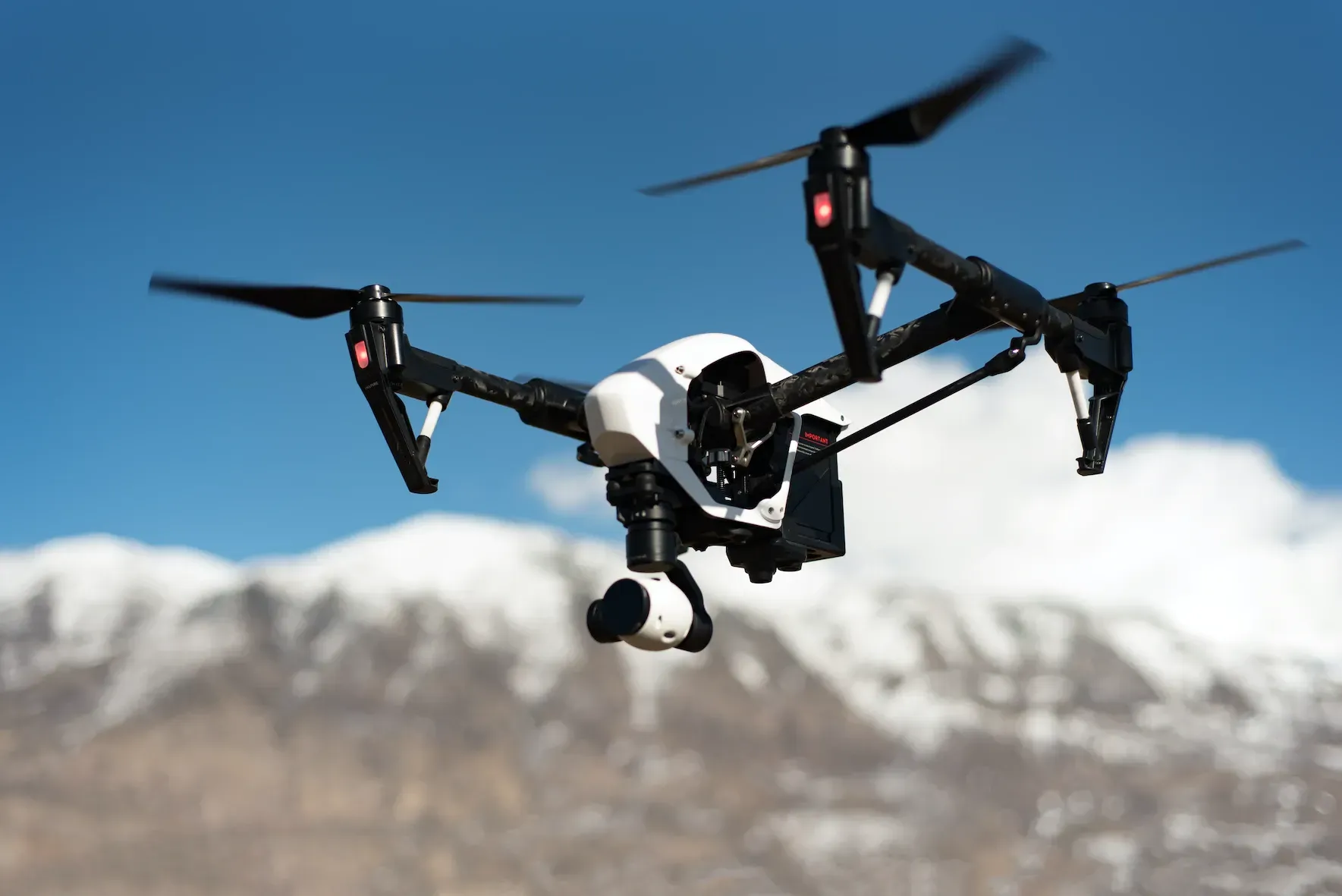
Protecting airspace from unsupervised drones for commerce and other purposes requires more than basic technology; it necessitates a tailored counter-drone solution considering specific challenges and priorities.
The Value Counter-Drone Technologies Add
Counter-drone technologies are systems, devices, and strategies that detect, track, recognize, and mitigate drone threats. As commercial and military drones proliferate, these developments have grown increasingly important in recent years.
Integrated counter-drone solutions improve security, safety, and regulatory compliance in various industries, protecting people and assets from drone threats. Their significance grows as drone technology advances, ensuring a safe environment.
Characteristics of Directed Energy Weapon Technologies
Target Acquisition
DEW targeting systems can accurately and precisely identify and track drones. This precision is critical because it ensures that the DEW's energy is directed only at the intended target, reducing the risk of collateral damage to objects within range or people. Drones can move quickly and unexpectedly, particularly in the hands of malicious operators.
DEW Aiming
Radar, Light Detection and Ranging, GPS, and optical cameras are the sensor technologies used for this purpose. Although accurate, the engagement range and environmental conditions influence the sensor selection. Inertial guidance systems provide continuous information about the weapon's status, allowing exact instantaneous modifications to align the DEW with the target drone.
Emission of Directed Energy
Directed energy emission is a fundamental feature of DEW technologies and critical to their effectiveness in Counter-Drone Operations. Electromagnetic energy, such as lasers, microwaves, or radio frequency waves, is highly focused and concentrated, allowing for precise drone targeting.
Energy Interaction of Lasers and Microwaves
Lasers are especially effective at engaging drones because they absorb energy and heat their components. When a laser beam strikes the surface of a drone, it results in ablation of critical drone components—rendering the drone inoperable.
In contrast, microwaves are a type of electromagnetic energy with wavelengths that are longer than visible light. Microwaves interfere with a drone's electronics operation by causing electrical currents to flow through its circuits, disrupting the drone's command systems and causing it to become inoperable.
It is a Non-lethal Approach
When engaging targets, DEWs provide an exceptional level of precision and accuracy. Because of this precision, operators can direct the energy beam at specific components of a drone. They do not produce toxic emissions, dangerous fragments, or explode, reducing the risk of collateral damage.
Benefits of Utilizing DEWs in Counter-drone Operations
- Laser-based DEWs travel at the speed of light, allowing them to reach their targets almost instantly. This feature is critical when dealing with fast-moving drones, allowing for rapid response and accurate targeting.
- They provide exceptional precision and accuracy while reducing the possibility of collateral damage. They can precisely focus their energy on the desired target, especially when drones are close to citizens or critical infrastructure.
- DEWs, unlike conventional kinetic weaponry, are frequently reusable as long as an energy source is available. This reusability has the potential to decrease operational costs as time passes, making them less expensive for long-term use.
Possible Drawbacks of Utilizing DEWs in Counter-drone Operations
- DEWs, although cost-effective compared to traditional ammunition-based weapons due to their electric power source, still demand substantial energy for effective operation, posing logistical challenges, especially in remote areas with limited access to reliable high-power sources.
- Fog, rain, or dust in the atmosphere may disperse or absorb the energy beams generated by DEWs, diminishing their effectiveness. This implies that adverse weather conditions can make target acquisition and tracking challenging.
- Counter-drone operations raise ethical, constitutional, and regulatory concerns, including questions about response proportionality and potential harm to bystanders. Adherence to global regulations and legislation is imperative.
Conclusion
While DEWs are helpful, they are most effective when integrated into a comprehensive counter-drone system that combines multiple technologies and approaches. Counter-drone operators must acknowledge that no single technology is a panacea.
Instead, DEWs must be combined with other technologies such as radar, sensors, and jamming devices to create a solid defense against the variety of evolving threats caused by drones.